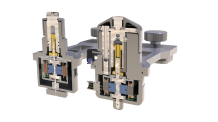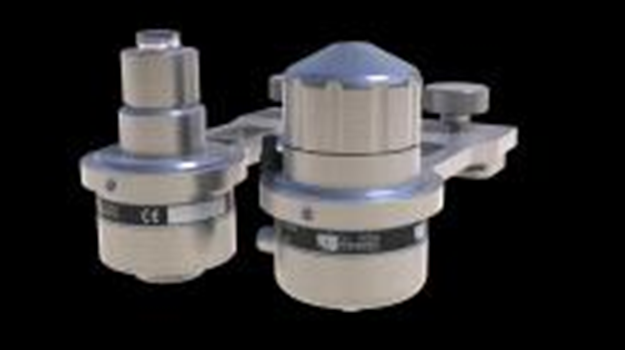, July 2013
- To be precise: the ‘launch of the Air Bustle Device II’. ‘The ABD II is even more effective and much more energy efficient as a result of new air nozzle design,’ says Erik van Holten.
You may know Q.I. Press Controls’ ABD system: the system corrects fan-out register on coldset and heatset rotation presses. With offset rotation printing, the first print colours spread as a result of moistness and pressure on the paperweb. This results in sidelay register errors. This can be corrected mechanically by narrowing this widened colour print before the next colours are added. In the early days disc wheels were used, with the risk of blemishes and even cutting the paperweb. These were replaced by brush wheels. Later, presses started using contact-less air pressure nozzles, also called “air bustles”. Our youngest development in this field is the ABD II, ‘because we felt the system could perform even better than our current ABD system,’ Van Holten explains.
innovation team
The Q.I. Press Controls’ ‘feelers’ stimulated Q.I. Press Controls’ innovation team to find ways to optimize the ABD system. This team focuses on priorities such as improved/optimized functionality, sustainability and reduction of exploitation costs. With these priorities in mind, the team looked at the air use of the ABD I and the effects of it. Compressed air is expensive enough to warrant a significant reduction, by developing an innovative nozzle. If you add up the costs of compressed air, every litre of air that can be saved, results in saving hundreds of Euros in a three-shift system! This was a good enough reason for our innovation team to try and realize a substantial reduction factor.
Practical need
On wider and faster rotation presses, the effects of a vibrating or fluttering paper web in between printing towers are bigger than before. This is the result of the release effect of the printed web, which actually wants to stick to the rubber cloth that just printed a colour on the that web. The web tension is taut enough to prevent this, but it does make the paper web vibrate or flutter in between two printing towers. How strong this effect is, is determined by the speed of the press, weight of the paper, printing ink and rubber cloth. These factors also influence how the ABD fan-out register system works. The ABD I builds up a ‘cushion’ of compressed air, with a large air surface. If the printer sees incorrect or turbulent fan-out effects, he will usually adjust the nozzle height. If the air pressure of the ‘cushion’ is insufficient, the fluttering web will hit the nozzle head, resulting in ‘striping’ on the printed paper. This could be easily solved by increasing the air pressure, but the downside of this is that more air is used, with higher costs. This resulted in the idea to increase the contact surface of the compressed air.
 Cross-section of both ABD versions. It is easy to see that version I creates an air-pressure ‘channel’, where version II creates circular air cushions underneath the paper web
Cross-section of both ABD versions. It is easy to see that version I creates an air-pressure ‘channel’, where version II creates circular air cushions underneath the paper web
Mushroom
The cross-section shows the solution which has been developed. The nozzle top has been completely redesigned. The nozzle hole – where the compressed air comes out perpendicular – is now a chamber with a mushroom stopper at the end. It looks like the hole is closed off, but it isn’t! There is a microscopic split in between the mushroom edge and the nozzle chamber. Seen from above, it is ring-shaped. With the air pressure more than halved, a much smaller amount of air can now achieve a protective ring of air, with an exit speed of Mach 1, against the lower side of the paper web! This is unbelievably fast and results in an extremely stable and powerful air cushion and corresponding lifting effect underneath the paper web. Pilot tests have shown that the larger contact area with the paper web makes the ABD II resistant to vibrating and fluttering of the paper web.
Facts and figures
The reinvented ABD II will be officially launched at the WAN-IFRA Publishing Expo Berlin (October 7-9, 2013). Demonstration nozzles will clarify the launch. The advantages of the ABD II:
• Completely contact free compensation of the fan-out register.
• Both fully automated fan-out regulation for all versions of the Q.I. Press Controls’ register systems and manual control via the air pressure desk.
• Minimum air requirements to stabilize the paper web.
• Fan-out register compensation with an accuracy of +/- 0.01mm.
• Your press operators and end products are faced with less adverse effects of a vibrating and/or fluttering paper web, because the ABD II offers an extremely stabile air cushion effect.
• The ABD II can be used instead of and/or in combination with the ABD I.
• The ABD II can be used in the same physical construction environment on/in the rotation press as the ABD I.
• No more paper tears because of fan-out problems.
• Completely maintenance-free.
Because we continue to listen to users and their experiences, Q.I. Press Controls constantly looks for ways to improve systems. Our innovation team is there for you!
Click here to download the pdf

Right, the new ABD II; left, the current ABD. Both systems have the same physical space requirements.